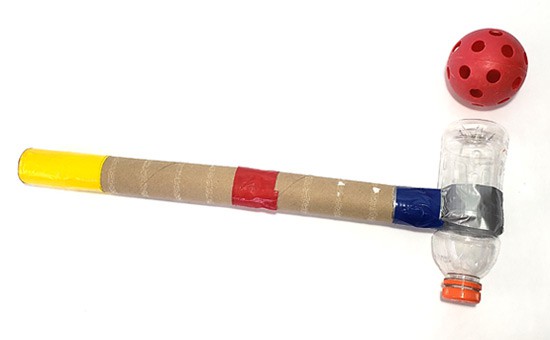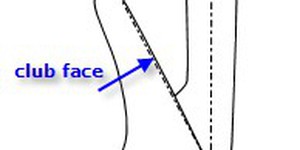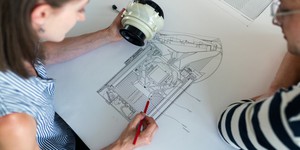Summary

Introduction
Do you play or watch a sport where you use something (other than your hands or feet) to hit a ball? Golf, baseball, tennis, hockey—there are many different sports where players use something to hit a ball or a puck. In this activity you will design, build, and test your own sports equipment made from recycled materials.
Materials
- Assorted recyclable materials: plastic bottles, cardboard boxes and tubes, etc.
- Duct tape and/or glue
- Scissors
- Pencil and paper
- Lightweight plastic or rubber ball (ping pong ball, whiffle ball, etc). Do not use a heavy ball like a baseball.
- A few friends to play your game with you!
Prep Work
- You could play floor hockey by clearing some space in the middle of a large room, and putting two chairs at opposite sides of the room. The legs of the chairs can form the "goals."
- You could play mini golf by cutting out circular pieces of paper for "holes" and putting them on the floor, then setting up obstacles to form a golf course.
- You can play table tennis by using some cardboard to make a "net" to go across the middle of a rectangular table.
- You could also make up your own sport, or use an imaginary sport like Quidditch from the Harry Potter series.
Instructions
- You might be tempted to start building something right away, but engineers are a little more systematic than that! First you will think through what you need to build and draw some sketches.
- Think about the sport you want to play, and what the "real" equipment looks like for that sport, or what you want the equipment to look like for an imaginary sport.
- Make a list of criteria for the equipment. For example, will you hold it with two hands or one? Will it need to hit a moving ball, or a stationary one? Will the ball be in the air or on the ground?
- Look at the materials you have available. Think about how you could combine or connect them to make the equipment. What items could you use for the "handle"? What about the part that hits the ball? How will you connect them?
- Draw a sketch of your sports equipment and label the materials you will use.
- Now it's time to build! Try to build your sports equipment following the design in your sketch. You don't need to stick to your sketch exactly. You might discover that things don't work as planned. For example, maybe two pieces don't fit together like you thought they would. This is OK! You can go "back to the drawing board" if you need to make a change.
- When you are done building, it's time to test! Try hitting the ball a few times (if necessary, depending on your sport, get a friend to throw or hit the ball to you).Can you hit the ball accurately? What about distance? Is your device easy to handle? Is it sturdy or is it too flimsy?
- Based on your observations, decide if you need to make any changes or improvements to your device. You might even decide to start over and build a new one. Again, this is OK! This process is called iteration. Engineers usually go through multiple iterations before arriving at a final design.
- Once you have arrived at a final design, build more copies of the device so you can play with your friends!
What Happened?
You probably discovered that you could build a simple device to hit a lightweight ball. For example, you can make a golf club or hockey stick by taping together paper towel tubes to form a handle, and a plastic bottle to form the head. However, your homemade sports equipment is probably nowhere near as sturdy as the real thing. Most baseball bats, hockey sticks, etc, are made from a single, solid piece. You probably had to use duct tape or glue to connect multiple pieces, for example taping multiple paper towel tubes together to make a handle. These joints introduce weak spots. Cardboard is also much flimsier than solid wood, or the super-strong materials like carbon fiber used to make some items like tennis racquets. So while you can have fun playing your game, you need to be careful—your equipment probably won't hold up to too much abuse!
Digging Deeper
How many sports can you think of where the athletes use something to hit a ball or a puck? Think about the size and shape of the item used in each sport. You'll quickly realize that they are all very different! For example, a baseball bat is long and skinny, while a tennis racquet is short and wide. Golf clubs and ice hockey sticks both have long handles, but the head of a golf club is much smaller than the blade of a hockey stick. What do you think would happen if you tried to play hockey with a tennis racquet, or baseball with a golf club? It probably wouldn't go very well!
Now think about the requirements for the equipment in each sport. They are all used to hit a ball (or puck), applying a force and changing the ball's speed or direction, but in very different situations. Golf players stand still to hit a small ball that is sitting stationary on the ground, so they can do so accurately using a club with a small head. They need to hit the ball very far (hundreds of yards), which requires a powerful two-handed swing. Conversely, tennis players need to move around quickly as they hit a moving ball back and forth across a net. Sometimes the ball is going over a hundred miles per hour! The wide face of the racquet makes it easier to hit the moving ball (imagine trying to do it if the racquet face was the size of a golf club's head), and using only one hand allows for more agility.








